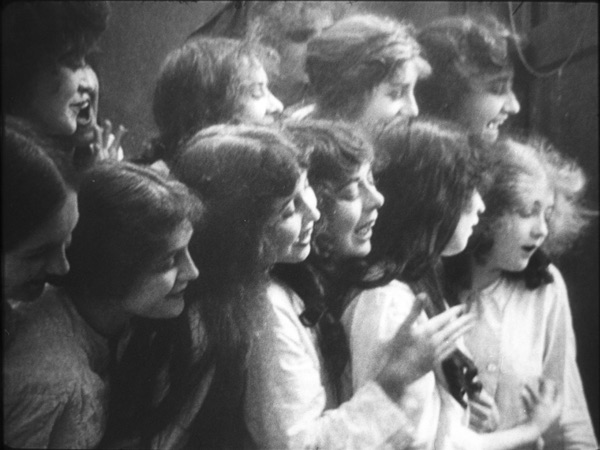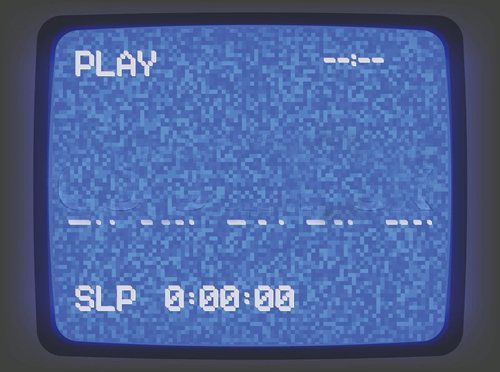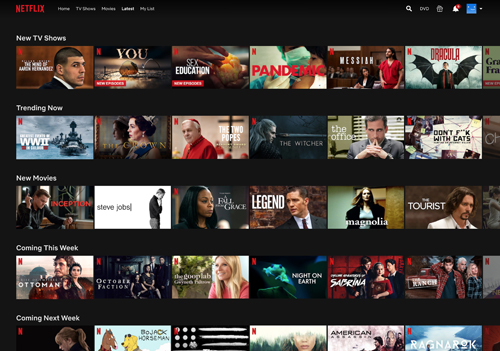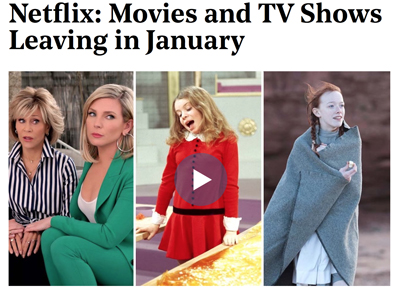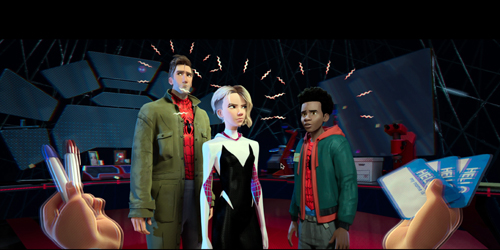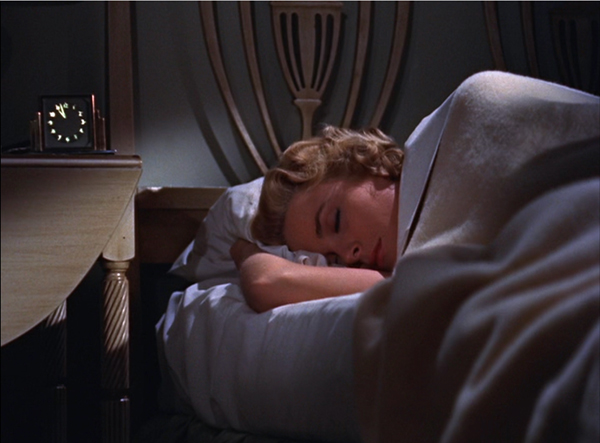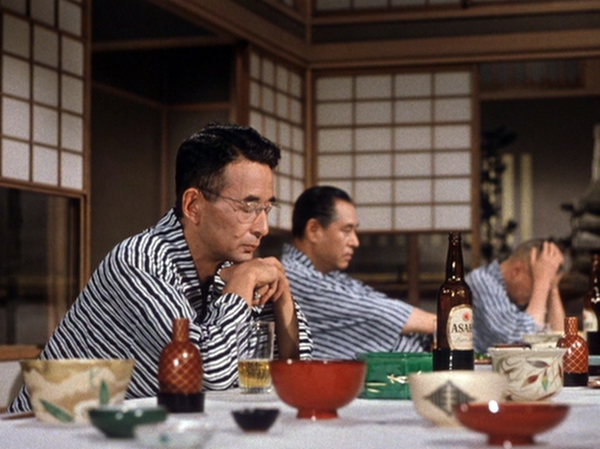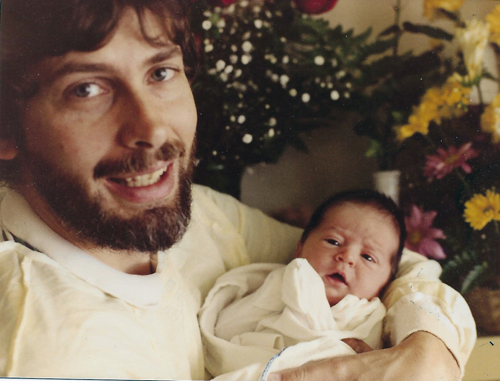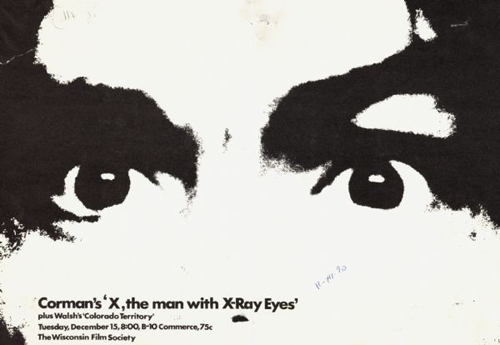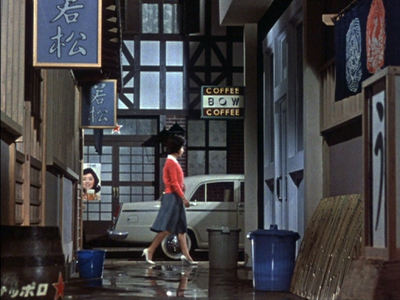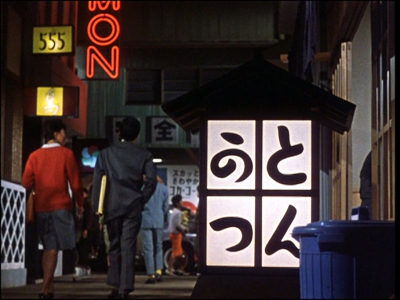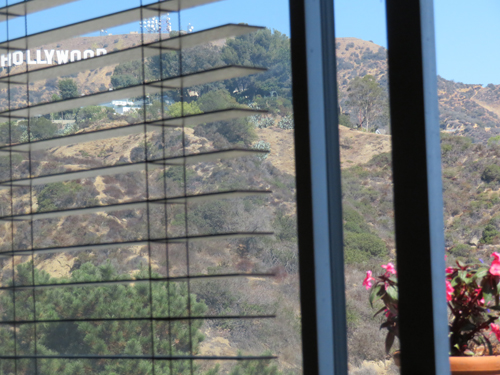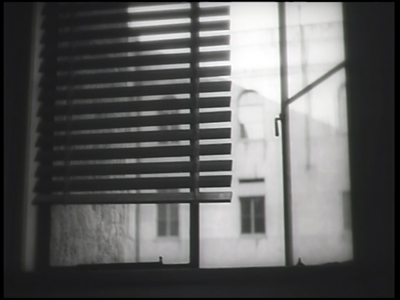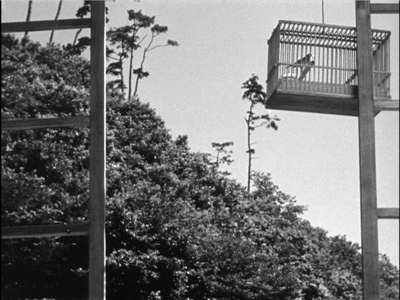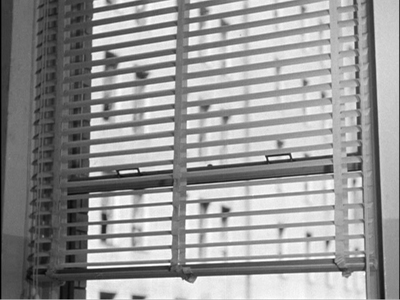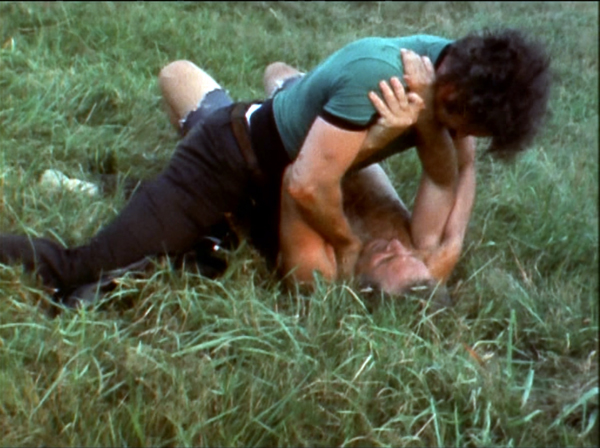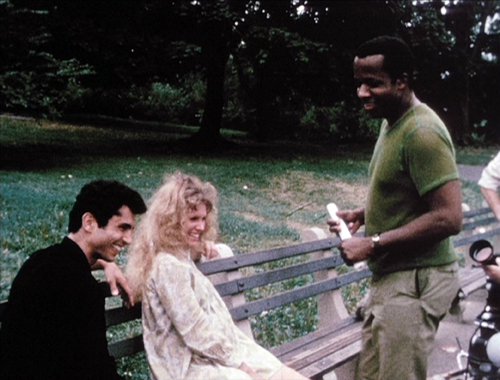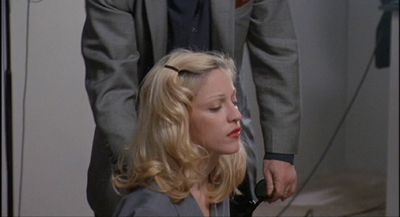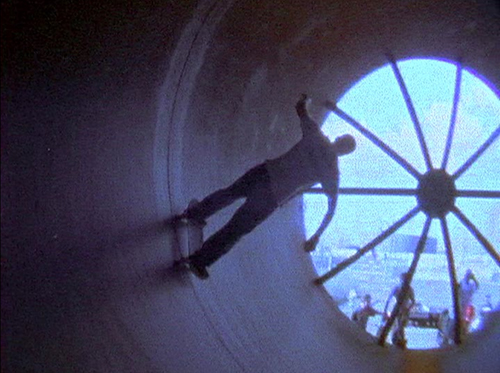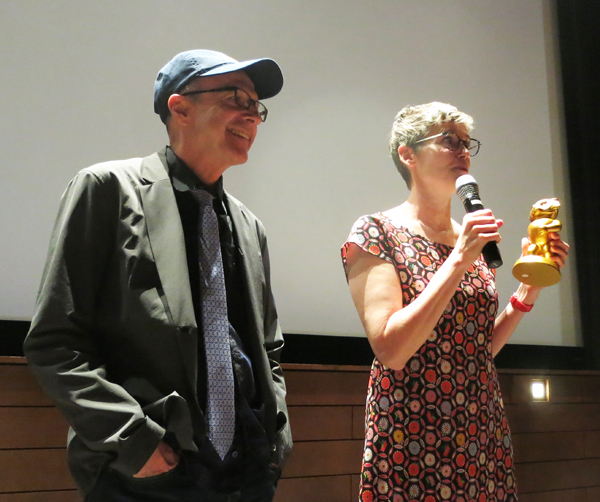Archive for the 'UW Film Studies' Category
When media become manageable: Streaming, film research, and the Celestial Multiplex
Never coming to the Celestial Multiplex: Liberty Belles (Del Henderson, 1916).
DB here:
A directors’ roundtable in The Hollywood Reporter says a lot in a little.
Fernando Meirelles: This June, The Two Popes was in 35 festivals. Then we were going to have two or three weeks of theaters. And then the [Netflix] platform. I mean, it couldn’t be better.
Martin Scorsese: We are in more than an evolution. We are in a revolution of communication and cinema or movies or whatever you want to call it.
Meirelles casually omits DVDs, at one point the most rapidly adopted format of consumer media. Yeah, what ever happened to discs? And in what follows, I’ll take issue with Scorsese’s claim that streaming has triggered a revolution. It’s more a case of evolution that issued in a sweeping change, like Engels’ transformation of quantity into quality, or Hemingway’s claim that he went broke slowly, then quickly.
More important, I’ll try to assess the impact streaming has had on what Kristin and I and other researchers and teachers try to do–study film as an art form in its historical dimensions.
Managing your time, and your movies
If we’re looking for a revolutionary turning point, I’d suggest the moment that movies no longer became appointment viewing. When they played theaters you had limited access. The film was there for only a while (even The Sound of Music eventually left) and you had to watch it at specified times. On broadcast TV and cable, the same conditions applied. But with the arrival of consumer home videotape in the 1970s, the viewer was given greater control.
Akio Morita of Sony called it “time-shifting.” The phrase, shrewdly positioned as a defense of off-air copying, captures a fundamental appeal of physical media. You could watch a film at home, and whenever you wanted to. Yes, VHS and even Beta yielded shabby images and even worse sound, but (a) theatres were often not much better, and (b) a video rental was cheaper than a movie ticket. Most important was a general rule of media technology: For the mass market, convenience trumps quality.
Videotape swept the world in the 1980s and gave films an aftermarket. Many an indie filmmaker could get financing for a project on anticipated tape sales. The laserdisc gained some attention in the 1990s, becoming a sort of transitional format. It improved quality (better analog picture, digital sound) but had drawbacks too. A movie wouldn’t fit on a single disc side, and a laserdisc was pricier than tape. LD remained a niche format, chiefly for educators and home-theatre enthusiasts.
The laserdisc was superseded by the DVD, introduced in 1996. Journalists claimed that it enjoyed the fastest consumer takeup in electronics history. Discs were more convenient than tapes, and proof of concept had been provided by the success of CDs for music. To compete, cable companies introduced “video on demand,” a time-shifting compromise between scheduled cable delivery and rental of tape or disc. People still use cable VOD, and for some purposes it’s a cheaper alternative to committing to subscription services.
Reviewing The Irishman, a critic suggested that most people will skip seeing it in theatres and watch it on Netflix, where it’s “more manageable.” With tape and disc, either analog or digital, consumers became accustomed to a huge degree of manageability. They could pause, skip ahead or skip back, race fast-forward or –back, play slowly, and above all play the movie over and over. DVDs made all these options quicker and more convenient than tape had. The market boomed. Video stores made discs available for rental, as tapes had been, and retail stores offered them for sale, at increasingly low prices.
But there were problems. In the 2000s there was a glut of DVDs, and consumers began to realize that a few weeks after release many titles would end up in the bargain racks. A brisk secondary market developed thanks to the US “first sale” doctrine, most virtuosically exploited by Redbox. Worse, there was piracy. Pirating analog tapes degraded quality across generations, but with digital discs you could rip perfect clones. Any teenager could hack past region coding and anticopying software.
The Blu-ray disc was an improvement on the first-generation DVDs, and it came along as more people were buying widescreen and high-definition home monitors. Properly mastered, Blu-ray discs looked good, and they had bigger storage capacity. Some consumers got excited, but the improved format couldn’t arrest the headlong decline of disc sales. In addition, the industry’s rationale for Blu-ray was its resistance to rippng, but hackers breached the codes with ludicrous speed.
From this angle, streaming is parallel to digital theatre projection : a new phase in the war against piracy. Likewise, as in theatrical screenings, you’re paying for an experience, not an item. You’re not buying an object you can copy or resell. If a movie is available only on streaming, you’re renting something, not owning it legally. One aspect of manageability—personally possessing a movie—is traded away for convenience and, ultimately, for limited access, as I’ll try to show.
Not so gently down the stream
With streaming, the age of appointment viewing seems more or less over. And the infinite vista of the Internet has encouraged tech-heads to imagine something like the Celestial Jukebox, a vast virtual multiplex in which all movies will be available. If iTunes and Spotify did something like this for music, why not cinema?
Let’s consider the pluses and minuses of streaming for ordinary consumers and for filmmakers.
Obviously, there’s convenience. After the monstrous tape cassettes, DVDs looked adorably slim. Now, gathering in slippery stacks, they have their own sinister aura. With streaming, there’s no need to run out to the video store or to buy new shelving to support a bulging library of discs.
There’s also price, compared to either theater tickets or cable fees. From $6.99 per month (Disney+) to $12.99 (Netflix), streaming services promise to provide TV and movies quite cheaply. And there’s the range of choice, which even on second-tier streamers exceeds the capacity of most towns’ video stores back in the day. Finally, there are many obscure films lurking in the corners of most streamers, so the joy of discovery is still there to a degree.
On the minus side, there’s one that gets the most press—the further erosion of “the theatrical experience.” Critics emphasize the pleasures that come from being in an audience, but this always seems to me overrated. More valuable to me are the scale of image and sound you get in a theatre. I like my movies to loom.
Above all, there’s a virtue in the lack of manageability. In the theatre you can’t pause the movie or run back or skip ahead. You can close your eyes, look away, or leave, but at bottom you’re there to turn your sensorium over to the filmmaker, to go through an experience you don’t control. This unshakeable grip on your attention yields some of cinema’s most powerful effects.
The condition of privatized viewing isn’t unique to streaming, of course. Nor is another drawback, that of the cyclical expiration and refreshing of “content” on streaming platforms. Admittedly, we’re warned. Newspapers and websites run alerts notifying us when a title is leaving a service—perhaps for a little while, perhaps longer, perhaps forever. And this situation is a bit like DVDs’ going out of print. But at least some disc copies exist to be sold second-hand or cloned as files. In working on my book on the 1940s, I was pleasantly surprised to learn that I could track down arcane titles on out-of-print discs, and at fair prices. When something not on disc leaves streaming, how do you access it?
I think there will be some pushback when subscribers learn about the costs that more and more services are tacking on. Yes, with Amazon Prime for $119 per year you get access to many films, along with other services. But for a great many films Amazon demands an extra rental fee and very short-term access. Within Amazon, there are channels (Britbox, HBO Now, Starz, Cinemax et al.), all of which demand further subscription payments. As people start to realize that streamers will have exclusive licenses for titles, they’ll feel pressure to subscribe to many services. Here, as elsewhere, the total streaming price tag starts to look like cable fees. Even the New York Times has noticed.
Another problem won’t bother most consumers, but it does matter. A streamed title will occasionally be in an incorrect aspect ratio. Most commonly, a Scope (2.39 or so) image will be cropped to 1.85. I noted this some years back, relying on a website showing faulty Netflix transfers, but that site seems to have been taken over by … Netflix itself.
Netflix will say, with all “content providers,” that they get the best material they can from their licensors. I don’t watch streaming enough to know how common wrong aspect ratios are, but if you know of examples, I’d like to hear.
Finally, even streaming companies can collapse. Unless Apple buys a studio (Lionsgate? MGM? Columbia?), it must rely on original content, and it could well flop. On the day I’m writing this, one hedge fund manager predicts we have reached peak Netflix. Given greater competition, slower growth, and accelerating cancellations, he maintains that Netflix is on the wane. If it scales back or fails (it currently carries $12.43 billion in debt), what will happen to its licensed material and its original content?
What about creators? Filmmakers, especially screenwriters, have enjoyed boom times. It may be a bubble, with over 500 scripted series available on broadcast, cable, and streaming. Still, it has given everyone a lot of opportunities. Documentary filmmaking in particular has enjoyed a shot in the arm.
And features are still doing quite well, at least on Netflix. Of the streamer’s top 10 releases in 2019, seven were features. But those proportions may change. Aside from big theatrical movies licensed from the studios, the impact of proprietary “event” programming (War Machine, Bird Box) has been fairly ephemeral. (Obviously Roma and The Irishman are exceptions.) The strength of streaming, it seems to me, is the same thing that sustained broadcast TV: serial narratives. Hence the popularity of Friends and The Office, as well as House of Cards and Orange Is the New Black.
Like network TV, a streamer needs a reliable, constant flow of content—not only many shows, but many episodes. The model of the series, if only in six or eight parts, secures the loyalty of the viewer for the long term. Even if all episodes are dumped at once, the promise of continuation after an interval of a year or several months keeps the viewer willing to hang on till the next season.
The pressure on the creators is predictable. Since form follows format, writers and producers will be pushed to come up with series ideas. A friend of mine pitched a feature-length movie to a streaming service. The suits loved the idea but wanted it as a series and were already scanning the script outline for a plot point that could launch a second season. Some of the streaming series I’ve seen, notably Errol Morris’s Wormwood, seemed to me stretched.
If a filmmaker lands a feature film on a streaming platform, other problems could follow. We’re well aware that independent filmmakers gain few royalties from streaming; their big check tends to be the initial acquisition. At the same time, they can’t be sure that people are watching their entire movie. My barber couldn’t stick with The Irishman, even with pee breaks.
Streamers seem to have accepted grazing as basic to the viewing experience. For purposes of measuring total viewership, Netflix counts a “viewing” of a film or program as a minimum of two minutes. In the light of the two-minute rule, we might expect filmmakers to crowd their opening scenes with plenty to grab us. That goes back to TV and TV-influenced films, of course, which tried to have a strong teaser even before the credits. Now, it turns out, streaming pop songs are being crafted with shorter intros and earlier choruses “to get to the good stuff sooner.” Maybe filmmakers will be trying the same thing. Maybe they already are.
Streaming and film research
Spider-Man: Into the Spider-Verse (2018).
Finally, what are some consequences of streaming for researchers, educators, and your all-around obsessive cinephile?
I think it’s fair to say that home video, in the form of tape, laserdisc, and digital disc, democratized film study. From the late 1960s on, I traveled to archives and film distributors to watch films for my research. It was troublesome, time-consuming, and costly. As a grad student I took a bus from Iowa City to Chicago to watch 16mm prints of Dreyer and Sontag films. I drove to Eastman House to see films in projection. I stayed in Paris a couple of months to work at the Cinémathèque Française on Marie Epstein’s visionneuse.
As a prof here at Madison I spent hundreds of hours watching prints in our Center for Film and Theater Research. Over the decades I trekked to Denmark for Dreyer and 1910s films, to Japan for silent films, to Paris and Munich and the BFI and MoMA and UCLA and Eastman House and the Library of Congress, and above all Brussels for many, many projects. Collectors, from Manhattan, Tokyo, and Milwaukee helped as well. Kristin and I owe archivists everything.
The terrible quality of films on tape didn’t help me study visual style, but laserdiscs were a big improvement. (Hong Kong films tended not to be in Scope on tape but were on LD.) And one LD format, CAV, was frame-accurate; you could study a shot frame by frame, something not possible with many DVDs. There’s always a trade-off with any technology.
Even after even after DVDs arrived I kept up my travels. I could use discs for bulk background viewing, but often I still had to rely on prints. Sometimes I wanted to count frames (handy in looking at Soviet montage and Hong Kong action). Moreover, looking at film prints revealed that the color palettes on DVDs could be quite different, and soundtracks were often cleaned up for the home market. And of course thousands of films, especially from outside Hollywood or in the first decades of cinema, were never going to be available on consumer video. My most recent extended archive stay, in Washington in 2017 thanks to a Kluge Professorship, showed me the glories of the 1910s in prints that are mostly accessible only to researchers.
What do scholars of an analytical bent need? Entire films that can be paused. Frame stills, made photographically or through software. Clips as evidence for our claims. Stills and clips are our equivalents to quotation for literary scholars and illustrations for art historians.
Apart from convenience and cost savings, the disc revolution yielded something I couldn’t get otherwise. In an archive, it’s impossible to study film-based 3D cinema. But thanks to Blu-ray, I can stop on a 3D frame. (. . . And, for instance, spot the way Hitchcock makes the clock quietly pop out in Dial M for Murder, below). This is a unique benefit—but a waning one, as 3D discs are increasingly hard to find and 3D monitors scarcely exist any more. As I said, trade-offs.
From this standpoint, Netflix and its counterparts offer a step down from DVD and Blu-ray. In terms of choice, many films aren’t currently available on streaming, and many more never will be. You can pull a DVD off a shelf whether you’re online or not, but for streaming you need a good connection. The controls of a streaming view aren’t as precise as those on a DVD player; slow forward and back to study cuts and gestures aren’t feasible, it seems.

When cable cropped films, as it frequently did, you had recourse to DVDs, perhaps even from foreign sources. But as exclusive licensing increases, only one service will have a title. Frame grabs are possible with some software, but clips are more difficult.
Worst of all, many worthwhile films will apparently never find their way to disc. I first noticed this in 2017 when I wanted to buy a copy of I Don’t Feel at Home in This World Anymore, a Netflix release of a Sundance title. As far as I can tell, it’s not available on DVD. The same fate has befallen one of my favorite films of 2018, The Ballad of Buster Scruggs. Only a few years ago it would be unthinkable for a Coen Brothers film not to find DVD release. Even Roma has had to wait for a Criterion deal to make it to disc. Clearly Netflix, and perhaps other streamers, believe that putting films on disc damages the business plan. So Meirelles doesn’t include DVDs in the lifespan of The Two Popes.
Without DVDs, some cinephiliac consumers are lamenting, rightly, the loss of bonus materials. The Criterion Channel has been exceptionally generous in shifting over its supplements to the streaming platform, but other companies haven’t been. Scholars and teachers rely on the best bonus items, including filmmaker commentaries, to give students behind-the scenes information on the creative process. There are, I understand, rights issues around supplements, and bandwidth is at a premium, but there’s no point in pretending that the loss of disc versions hasn’t been important.
In 2013 Spielberg and Lucas declared that “Internet TV is the future of entertainment.” They predicted that theatrical moviegoing would become something like the Broadway stage or a football game. The multiplexes would host spectacular productions at big ticket prices, while all other films would be sent to homes. Lucas put forth the question debated in the directors’ roundtable I mentioned: “The question will be: ‘Do you want people to see it, or do you want people to see it on a big screen?’”
Still, the big changeover hasn’t happened quite yet. Every year has its failed blockbusters, and films big and middling and little (Blumhouse, for instance) still continue. Arthouse theatres, which rely on midrange items, indie production, and foreign fare, are putting up a vigorous fight, emphasizing live events and community engagement.
Meanwhile, streaming makes film festivals and film archives more important. Festivals may host the few plays that a movie gets (as in the 35 fests which ran The Two Popes), and filmmakers, as Kent Jones remarks, are eager for their films to play on the big screen in those venues. Archives will need not only to preserve films but also make classics and current movies available in theatrical circumstances. Smart film clubs like the Chicago Film Society and our Cinematheque keep film-based screenings alive.
Before home video, few film scholars undertook the scrutiny of form and style. Those who did had to use editing machines like these. (One scholar called my study of Dreyer, not admiringly, the first Steenbeck book.) Ironically, just as an avalanche of films became available for academic study, and as tools for studying them closely became available for everyone, most researchers turned away from cinema’s aesthetic history and a film’s specific design in order to interpret their cultural contexts. There were exceptions, like Yuri Tsivian’s efforts to systematically study patterns of shot length, but they were rare.
Whatever the value of cultural critique, one result was to leave aesthetic film analysis largely to cinephiles and fans. Thankfully, the emergence of the visual essay, in the hands of tech-savvy filmmakers like kogonada and Tony Zhao and Taylor Ramos, eventually attracted academic attention. Film analysis has returned in the vehicle of the video essay, which is a stimulating, teaching-friendly format. Kristin, Jeff Smith, and I have participated in this trend through our work with Criterion and occasional video lectures linked to this site.
All this was made possible through the digital revolution, or evolution, and we should be grateful. Still, streaming filters out a lot of what we want to study. It’s clear that, for all their shortcomings, physical media were our best compromise for keeping alive the heritage of critical and historical analysis of cinema. We’ve largely lost physical motion pictures as a contemporary medium. (How many young scholars, or filmmakers for that matter, have handled a 35mm print?) Now, to lose DVDs and Blu-rays is to lose precious opportunities to understand how films work and work on us.
Thanks to all the archivists, collectors, and fellow researchers who made our research so fruitful and enjoyable in the pre-digital age.
A good overview of the streaming business at this point is “The future of entertainment,” in The Economist.
Kristin discusses the fantasy of the Celestial Multiplex with archivists Schawn Belston and Mike Pogorzelski. For examples of how to watch a film on film slowly, go here. Samples of editing-table discoveries are here and especially in the Library of Congress series that starts here. In another entry, I discuss the use of 3D in Dial M for Murder.
P.S. 24 January 2020: Then there’s this, from Facebook.
Dial M for Murder (1954).
Kindest, E.: A memoir of Edward Branigan
Equinox Flower (1958).
DB here (but writing for Kristin too):
Edward Branigan died on Saturday, 29 June, in Bellingham, Washington. He had fought for a year against Acute Myeloid Leukemia. He was 74.
Edward was an ambitious, highly original film theorist. His first book, Point of View in the Cinema (1984) has become the definitive study of the creative POV options available within “classical” filmmaking. Narrative Comprehension and Film (1994) is a sweeping account of the viewer’s activity in ascribing meaning to stories on the screen. Projecting a Camera: Language-Games in Film Theory (2006) is a meta-level account of how critics and theorists talk about films; it teases out different capacities and qualities we assign to “the camera.” Edward’s last book, published in December 2017 is Tracking Color in Cinema and Art: Philosophy and Aesthetics. It ranges across physics, psychology, art history, and philosophy (mostly Wittgenstein) to explore how we understand and appreciate color imagery.
Edward was also a prodigious editor, producing with Warren Buckland The Routledge Encyclopedia of Film Theory (2015) and with Chuck Wolfe the American Film Institute Readers, a series of forty anthologies on a huge range of topics. He taught at UCLA and Iowa, but his tenure home was UC–Santa Barbara, where he started in 1984 and remained until retiring in 2012.
Keeping in touch
Edward and Evan Branigan, 1984.
So much for a bare-bones Wikipedia entry; Edward deserves a full-blown one as soon as possible. What even that couldn’t capture is the intense admiration, even devotion, he aroused in students and colleagues. He won many teaching awards, including a Distinguished Service Award from the graduate students of his department. For his peers in the profession he was a reliably easygoing, cheerful presence in the sometimes chilly corridors of academe.
Kristin and I met Edward in 1974, and we kept up with his life (one far more dramatic than ours) as best we could, separated by half a continent. Over the decades we visited him occasionally in Santa Barbara and Los Angeles. For too-few times he returned to Wisconsin for summer vacations. Our last reunion was in September of 2016 at a Seattle coffee house.
My email records before 2004 have gone astray, but after that I count over 400 messages, some very long. I could fill this entry with remarkable passages, and I expect other correspondents have equally plump archives. From 2007:
John [Kurten] and I have had three consecutive movie binge weekends. it’s a treat to start watching films in the afternoon and never think about stopping (more or less for two days at a time) — isn’t this what the profession promised?
He often wrote to correct mistakes I made in books and essays, so getting this reaction to my In the City of Sylvia entry left me elated. (Fortunately for me, he hadn’t seen the film yet.) One sequence perfectly fulfilled the conditions he laid out in his POV book.
You madman, it’s brilliant. Your latest blog. Maybe the film, too. From what you say, I thought of layers and uncertainties, intersections and random slidings. Open expectation or expectation opened. Is *Sylvia* for the point-of-view shot, i.e. for a point in space, what *The Conversation* was for sound, *Blow-up* for the photograph, *Time Regained* for memory, and etc.?
When I discovered a “Hitchcock supercut” compiling favorite motifs and themes, I was reminded that in the pre-digital era Edward had mounted something similar for his course.
Thanks for this link. . . . I did teach Hitchcock a number of times in the mid-to-late 80’s. My final lecture was exactly and precisely as described on the link you sent. All (almost) of Hitchcock’s films were represented on two Kodak Carousel projectors jammed full. I projected two simultaneous images side by side of visual motifs (staircases, camera movements…etc.). Slow dissolves between each pair of images to the next pair. I made a music tape and keyed certain images to climaxes in the music. Only taught the course in the 80’s. Seems an age ago. Not to mention the changes in technology. I have ten metal cases of slides that are orphans now with no projectors. As do you and Chuck [Wolfe] with many more cases. I had some of my slides digitized, but the quality was disappointing.
But later he reports his house fire:
I have realized that my eight cases of 35mm slides taken directly from 16mm prints — collected since 1974 — are gone in the fire, including a slide from every setup of An Autumn Afternoon.
Speaking of Hitchcock, in 2012 I told him that Sir Alfred would have a place in the book I was planning on the 1940s. This got him going:
Mr. missed D.,
Rethinking Hitchcock! I want to read it. . . . Nice to hear from you generally and I trust you and KT to be well. I suspect the latter has seen The Hobbit many a time so far and planning still more viewings. Nicholas and I are in Seattle. This morning after a large breakfast (omelet, steel-cut oatmeal, hash browns, muffins, black tea) I watched out a tenth floor window as the monorail docked at the Space Needle, while visiting my parents and the other Usual Suspects (i.e., relatives), and planning further hiking, movies, bridge, serious eating, shopping ski apparel activities, and so forth. It’s fairly deeply relaxing here. (It suggests what retirement could be for me in Summer 2014, retirement being in name only at the moment.) I saw two float planes land on Lake Union, taxiing to the shore, water spraying up over the floats, red and green lights continually snapping on and off on both wings (i.e., not one red on the left wing, one green on the right wing). Interstate 5 is in the distance, the car headlights of morning commuter traffic turning it into a winding white snake as the day is strongly grayish, clouds about 40 stories up, swirling, banking up, no sign of sky (thus solar panels are useless), the Olympic Mountains are in the distance, people are walking on the streets below this way and that with purpose, with destinations firmly in mind. Have I mentioned the large rotating, neon pink elephant sign glimpsed in the distance between some buildings that advertises simply, “Car Wash,” as if it doesn’t rain often in Seattle? The sign stops briefly on every rotation to shine out its message in white neon bulbs, “Car Wash,” the message never changing. Up here I’m living in a parenthesis. Looking out at a vast aquarium.
He never forgot my birthday. This is from 2014, as is the photo at the bottom.
HB, big guy. Wherever you are, it’s still HB. Thinking of you.
I’m traveling for a month, meeting many persons, hiking above the treeline in the Rockies, World Lacrosse Championships, Denver, Boulder, Fort Collins, Estes Park, The Stanley Hotel (think The Shining), Seattle, northern Wisconsin, seeing all the sons, and more. Consulting on two legal cases. Have no time. Retirement is the bestest. Even trying to write.
From 2018:
I’ve seen Blade Runner 2049 seven times. A masterwork. Been drinking the Blade Runner Director’s Cut Johnnie Walker Black Label Scotch in the film’s Italian crystal glasses. Watched all sixteen episodes of the Netflix series, Babylon Berlin, in three nights. Should interest you in terms of detective fiction. First-rate fun. Weimar seems like hell with all its circles intact. It’s not up to Fassbinder’s Berlin Alexanderplatz, but what is?
During his cancer treatments, he managed to keep corresponding. Although the paragraphs got shorter, the tone never changed. This from May of this year:
I appreciate your generous words and kind thoughts. I haven’t been feeling well. The blasts have been creeping back. . . . More chemo is likely, maybe a clinical trial. . . .
Enemy. The film streams on Netflix. Take a look. Don’t read anything about it, and its shocks, until it settles on you.
Game of Thrones ends tomorrow for all time until the HBO prequel is ready. I think Dany is killed by Ayra disguised as Tyrion. Jon Snow moves the Iron Throne to Westeros with him upon it.
He inevitably signed these energy bursts, “Kindest, E.”
The 70s: Beyond the New Hollywood
Wisconsin Film Society poster, 1970.
My most vivid memories come from the years we knew him as a student and friend here in Madison. He was part of a thriving intellectual community that, from the distance of today, informed our lives in deep and lasting ways.
Edward, Vietnam veteran (Marines, Communications), took a film course with me in spring 1974, his final year of law school at UW. It was my second semester of full-time teaching. He then signed up for our graduate program. I shouldn’t have been surprised by his shift of career. As an undergraduate he had majored in Electrical Engineering and English. He also wrote poetry.
He entered a community bursting with talent. When I got here in 1973 I was handed four superb TA’s: rigorous and righteous Doug Gomery, witty and charming Brian Rose, meticulous silent-film aficionado Frank Scheide (who looked like a young Buffalo Bill), and already stunning experimental filmmaker James Benning. There was Maureen Turim, fresh from a year in Paris and immersed in Bresson and the avant-garde; Diane Waldman, who’d write the still-definitive account of Hollywood’s female Gothics; Fina Bathrick, who was researching family melodrama before almost anybody else; Marilyn Campbell, the first I think to analyze the Fallen Woman film of the 1930s; Bette Gordon, already at work on her own fine films; and Peter Lehman, already an eloquent advocate for John Ford, Blake Edwards, and Roy Orbison. While everybody else was hot for the new Hollywood, we were into the old one, along with films from beyond the US that later would gain their proper recognition.
Coming in the door were still more gifted grads: Vance Kepley, Janet Staiger, Kerman Eckes, Barb Follick, Barbara Pace, Nancy Ciezki, Diane Kostecke, Mary Beth Haralovich, Cathy Klaprat, Don Kirihara, Darryl Fox, and on and on. I was also establishing ties with young scholars elsewhere: Phil Rosen, Mary Ann Doane, and Bobby Allen at Iowa; Noël Carroll, Paul Arthur, and Tom Gunning at NYU. Networks and enduring friendships were forming. An actual academic field was emerging.
Like every young faculty member, I was learning on the job. I was groping to figure out the problems that interested me most–film form and style, considered in a comparative historical context. The BFI magazine Screen was having a big impact, but so were translations of works by Noël Burch, the Russian Formalists, and French Structuralists. Feminism, neo-Marxism, and Third World politics found their way into our curriculum. Barthes’ S/z became a constant reference point. I went on WORT radio to defend semiotics and The Godfather.
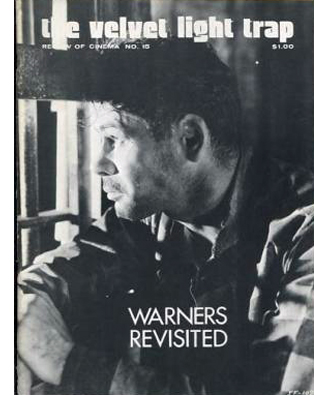 Just as important, American distributors like New Yorker and Audio-Brandon were releasing new European and Latin American titles as well as old works from Asia. In those pre-video days, 16mm prints were our best chance to catch up, not just through classroom showings but through the twenty-plus campus film societies. (There were Sam Fuller double features, but also Godard retrospectives and political documentaries.) And we had The Velvet Light Trap, which published zesty in-depth studies of genres, studios, and auteurs. The campus was movie-mad.
Just as important, American distributors like New Yorker and Audio-Brandon were releasing new European and Latin American titles as well as old works from Asia. In those pre-video days, 16mm prints were our best chance to catch up, not just through classroom showings but through the twenty-plus campus film societies. (There were Sam Fuller double features, but also Godard retrospectives and political documentaries.) And we had The Velvet Light Trap, which published zesty in-depth studies of genres, studios, and auteurs. The campus was movie-mad.
In my seminar on “Classical Hollywood Cinema and Modernist Alternatives,” we analyzed random titles from the Warners and RKO archives alongside Ordet, Equinox Flower, Four Nights of a Dreamer, and Chronicle of Anna Magdalena Bach. The Student Union screened Play Time in 35 across a whole weekend so my theory class could write essays on it. We brought touring Japanese, French, and Italian film packages to campus.
His Girl Friday, Meet Me in St. Louis, Possessed, Naniwa Elegy, Genroku Chushingura, Tom Tom the Piper’s Son, Death by Hanging, The Man Who Left His Will on Film, The Red and the White, and many other films became touchstones for us. In the midst of all this, senior colleague Tino Balio helped us see how to tie aesthetic analysis to the protocols of national film industries and similar institutions. He became a good friend and ally in many skirmishes, as did Jeannie Thomas Allen, with her work on women and media.
For Kristin and me, the years 1973-1980 crystallized research programs we never left behind. In these years I wrote my Dreyer book, Kristin did her dissertation on Ivan the Terrible, and we published Film Art: An Introduction. With Janet Staiger we began work on what became The Classical Hollywood Cinema. Meanwhile, our students were writing articles for journals and showing up en masse at conferences, a good-natured mafia.
Edward plunged into this and never looked back. He made an offbeat, poetic narrative film (which I hope his family can locate). He ran scenes to and fro on our Steenbecks and analytical projectors, checking match cuts and camera movements. He and Kristin drove down to Chicago for back-to-back screenings of Lancelot du Lac. He began writing on film color, a focus of his research for the next forty years. Above all, we were bound together by Ozu.
Tokyo Story was circulating in 16mm after its smashing New York revival in 1972, and Audio-Brandon and New Yorker acquired several more Ozu titles, early and late. That began our love, or rather mania, for this director. We three watched those prints over and over, eventually writing two essays for Screen in summer of 1976. Edward hoped for a long time to write his doctoral dissertation on An Autumn Afternoon, planning to devote an entire chapter to the woman in the red sweater who passes through scene after scene.
I still want to read that.
Ozu was never far from our thoughts. When Edward finished his dissertation, he gave me a framed still from Equinox Flower. It surmounts this entry. I learned so much from our conversations that I dedicated my Ozu book to him, with a Japanese inscription that means “the pupil who teaches the teacher.” As soon as the book went online, he wrote to tell me of Net problems.
I downloaded the Ozu book. Now, how do I get the color photos and the new crisp b&w’s? Must they be downloaded individually, one at a time? I want them in the book. I want them.
Thanks to his persistent pressure, the University of Michigan created a smoother download.
One constant point of discussion in the 70s was Ozu’s red teakettle in Equinox Flower. When in 2011 Kaurismaki noted it, I sent the link to Edward. He replied:
The red teakettle was a killer for sure. I never really leave the 70s and Vilas Hall… Late nights. 16mm stop motion. I also very much appreciated your blog entry on the four looks at Ozu. Shouldn’t you at some point do a streaming video for your blog?
Sometimes Ozu was merely evoked, not mentioned. One email had this attachment.
Edward knew I would immediately think of a shot from Dragnet Girl and two from Early Summer.
My last email from Edward in May includes this:
Ozu… A year ago I looked at all six of his color films. The color designs are distinctive and sophisticated, but perhaps too complicated to write about. . . .
If he were still with us, I bet he’d try.
Edward’s vitae is available here.
We’re grateful to all those who have shared Edward’s company with us over the years. Vance Kepley helpfully corrected my memory of the 1970s. Thanks especially to Roberta Kimmel and Evan Branigan, who sent us bulletins.
P.S. 9 July 2019: Thanks to Chuck Wolfe, Edward’s tireless colleague at UCSB, for correcting my initial claim about his undergraduate major.
P.S. 12 July 2019: The Film and Media Studies Department at UCSB has posted its tribute to Edward.
Edward Branigan, 1945-2019.
Accident forgiveness: J.J. Murphy’s REWRITING INDIE CINEMA
Maidstone (1970).
DB here:
Did you ever want to beat up Norman Mailer? The impulse must have flitted through the minds of many who paged through his work, saw him on TV, or encountered him swaying pugnaciously at a party. Rip Torn took the opportunity. One day in 1968, he whacked Mailer with a hammer and started to strangle him. As the distinguished author tried to bite off Torn’s ear, Mailer’s wife leaped into the fray and his children shrieked with fear.
This scene, totally unscripted, appears in Mailer’s film Maidstone (1970) and opens J. J. Murphy’s new book Rewriting Indie Cinema: Improvisation, Psychodrama, and the Screenplay. Nothing could better prepare us for his exploration of the traditions–and sometimes jarring consequences–of spontaneous performance in modern American movies.
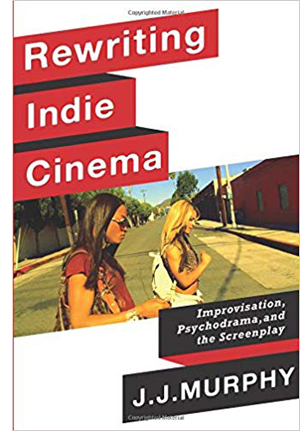 I couldn’t have predicted that J. J., who was in grad school with Kristin and me, would turn to research. He began as part of the Structural Film movement, achieving wide renown with Print Generation (1974) and (my personal favorite) Sky Blue Water Light Sign (1972). After he was hired here at Wisconsin, he rejuvenated our production program and went on to make independent features: The Night Belongs to the Police (1982), Terminal Disorder (1983), Frame of Mind (1985), and Horicon (1994).
I couldn’t have predicted that J. J., who was in grad school with Kristin and me, would turn to research. He began as part of the Structural Film movement, achieving wide renown with Print Generation (1974) and (my personal favorite) Sky Blue Water Light Sign (1972). After he was hired here at Wisconsin, he rejuvenated our production program and went on to make independent features: The Night Belongs to the Police (1982), Terminal Disorder (1983), Frame of Mind (1985), and Horicon (1994).
At the same time, he was teaching both production and screenwriting. His books reflect his deepening interest in the creative process of making a film outside the Hollywood system. His initial study, Me and You and Memento and Fargo: How Independent Screenplays Work (2007), focused on the principles of screenplay construction that emerged with US indie cinema. Then, in The Black Hole of the Camera: The Films of Andy Warhol (2012), J. J. offered the most complete analysis of this superb body of work. In the process, he opened up a new vein of exploration. The idea of psychodrama proved an exciting way of explaining the fascinating, awkward performances in films like Kitchen (1965), Vinyl (1965), and Bike Boy (1967).
Now the concept of psychodrama gets full play in an ambitious account of the changing role of improvisation in off-Hollywood cinema. What happens, J, J. asks, when filmmakers give up the screenplay? How do they construct a story, define characters, build performances? Rewriting Indie Cinema sweeps from the 1950s to recent films like The Rider and The Florida Project. By looking for alternatives to the fully prepared screenplay, it posits a fresh way of thinking about American film artistry.
Human life isn’t necessarily well-written
Symbiopsychotaxiplasm: Take One (1968).
To start off, J. J. proposes that we think of improvisation in a systematic way. Of course, the concept can be treated broadly. Even Hitchcock, we learn from Bill Krohn, improvised on the set much more than he claimed. But J. J. suggests that improvisation can be considered as a basic creative concept, a founding choice for art-making.
In the 1950s, many American artists began to embrace chance, accident, and personal expression. Abstract Expressionism, bebop, the Judson Dance Theater, Robert Frank’s snapshot aesthetic, and other tendencies valued spontaneity as both authentic self-expression and a challenge to conformist culture. The idea of spontaneity was carried into cinema by Jonas Mekas and fueled what became the New American Cinema of John Cassavetes, Shirley Clarke, and other filmmakers.
But the idea had deeper sources in another trend that J. J. painstakingly brings to light. The Austrian theater director Jacob L. Moreno developed in the 1920s what he called the Theatre of Spontaneity (Das Stegreiftheater). Performances consisted of purely improvised dialogue. When Moreno emigrated to America, he founded “Impromptu Theatre” in the same vein. His 1931 performance at Carnegie Hall was greeted by the New York Times with some disdain:
The first play, like the ones that followed, turned out to be a dab of dialogue uneasily rendered by its hapless players. . . . It became more and more evident that heavy boredom, rather than “forms, moods and visions,” were [sic] the product of the actors. Demanding wit above all else, the Moreno players lacked that essential as fully as the premeditation upon which they frown so heartily. The legitimate theatre, it can be reported this morning, is just about where it was.
Of course improvisation had already proven its worth in vaudeville and in jazz and other musical idioms. Today versions of Moreno’s “spontaneous theatre” flourish in comedy clubs.
Before coming to America, Moreno had discovered that improvisation had therapeautic functions as well. When a couple enacted the frustrations of their marriage, the audience was moved and Moreno was convinced that this “psychodrama” harbored artistic possibilities. Moreno’s wife Zerka called psychodrama “a form of improvisational theatre of your own life.”
J. J. shows Moreno’s pervasive influence on the postwar American scene. Psychodrama became one trend in social psychology, used to help prisoners, narcotics addicts, and even business executives. Woody Allen, Arthur Miller, and other artists were aware of Moreno’s work as well.
Drawing on Moreno but recasting him for film-related purposes, J. J. proposes a spectrum of improvisational options. There’s the completely improvised, ad-lib option, seen in Maidstone and much of Warhol’s work. Here the performers just make it up as they go, though with minimal framing of a situation. Then there’s the possibility of “planned” improvisation, in which there’s a story outline and more or less pre-set scenes. Sean Baker’s Tangerine (2015), for example, was made from a seven-page treatment that included only a couple of lines of dialogue. Then there’s the “rehearsed” option, in which the players collaborate to prepare the scenes and develop the characters, workshop fashion. In production the performers mostly stick to the “script” they’ve created. J. J. points to the films of Cassavetes as a clear case.
Any given film can mix these options, so that some scenes are planned roughly while others are purely ad-lib. And a filmmaker can explore the spectrum across several films, as Joe Swanberg has done.
Where does psychodrama come in? J. J. shows that any of the three points on the improvisation spectrum–pure, planned, and rehearsed–can yield performances that are based in the actual mental states and personal histories of the players. In our Cinematheque screening devoted to his book, Abel Ferrara’s Dangerous Game (1993) served as an example. Harvey Keitel invested his character, an intransigent film director, with the still simmering emotions he felt after his breakup with Lorraine Bracco. Meanwhile Ferrara set up scenes that would provoke Madonna, playing Keitel’s actress, to break character and reveal her immediate responses.
Ferrara wanted to attack Madonna’s celebrity image, and J. J. reads the aftermath to a rape scene in the film being made as projecting the star’s own stammering outrage at having been exploited.
Throughout the book, when improvisation becomes psychodrama, fiction moves closer to documentary. The last chapter examines how certain films considered documentaries, like Robert Greene’s Actress (2014) and James Solomon’s The Witness (2015), cross over into psychodrama from the other side, so to speak.
A detailed study of William Greaves’ Symbiopsychotaxiplasm: Take One (1968) shows how Greaves used psychodramatic techniques to create an even more complicated film-within-a-film than Dangerous Game. Two characters, Freddie and Alice, are played by five different pairs of actors, with all their scenes recorded by a bevy of camera and sound staff.
Greaves also incorporates self-criticism. When crew members object to the script, another participant remarks: “Human life isn’t necessarily well-written, you know.”
Given these conceptual tools, J. J. goes on to trace the production methods employed by a wide range of filmmakers, from Morris Engel in The Little Fugitive (1953) and Cassavetes in Shadows (1959) to Mumblecore and after. Through a mixture of film analysis and background research, he brings to light a vast variety of creative options that can bypass fully-scripted cinema.
Rewriting the unwritten
Paranoid Park (2007).
J. J.’s survey of production methods is embedded in a new historical argument about the shape of off-Hollywood filmmaking. The New American Cinema of the 1950s, which Mekas called “plotless cinema,” was wedded to a sense of realism. But it operated within limits. Cassavetes serves as a benchmark: “I believe in improvising on the basis of the written work and not on undisciplined creativity.” By balancing the planned with the impromptu, his films allowed for the actors to surprise one another. At the same time, Shirley Clarke’s Portrait of Jason (1967) showed how psychodrama could pass easily into documentary, exemplifying Erving Goffman’s theory that everyone is playing theatrical roles in everyday life.
This open approach to screenwriting and screen acting was explored by many filmmakers in the 1960s and a little after: not only the well-known Warhol and Mailer but also Kent Mackenzie, Barbara Loden, William Greaves, and Charles Burnett. J. J. examines all this work in admirable detail. I was especially happy to see that he includes Jonas Mekas’ The Brig (1964), the harrowing film that showed me, in my undergrad days, what the New American Cinema could do in filming a play.
By the time Ferrara made Dangerous Game, most independent filmmaking had moved away from improvisation toward more tightly scripted expression. J.J. traces the institutional pressures operating here. The Sundance Film Festival and PBS’s American Playhouse favored fully-planned projects compatible with the Hollywood standard. The Sundance Institute, launched in 1981, explicitly aimed to correct what was considered the two faults of independent production: screenplays and performances.
The success of polished work like sex, lies, and videotape (1989) and Pulp Fiction (1994) created new norms for American indie cinema. Director-screenwriters like Soderbergh, Tarantino, David Lynch, Hal Hartley, Todd Haynes, the Coens, and Todd Solondz were models for younger filmmakers. As J. J. points out, their screenplays were often published as part of the marketing of the films. Framing the new trend as dominated by the screenplay helped me understand why Bryan Singer, Doug Liman, Karyn Kusama, and other indie filmmakers who came up in the wake of this generation moved so easily to mainstream genres and big-budget projects.
But history plays strange tricks. In the 2000s, filmmakers who felt constrained by the demands of tight scripting began to try something else. J. J. pays special attention to Gus Van Sant, who after proving his commercial craft, made some films with varying degrees of improvisation: Gerry (2002), Elephant (2003), Last Days (2005), and Paranoid Park (2007). Some of the Mumblecore directors relied on screenplays, but the prolific Joe Swanberg adopted a free-form approach, to which J. J. devotes a chapter.
J. J. goes on to survey the work of Sean Baker, the Safdie brothers, Ronald Bronstein, and other directors who have revived the New American Cinema’s impulses in the digital age. He concludes:
Digital technology in effect, democratized the medium, allowing young filmmakers to revive cinematic realism precisely at a time when indie cinema was at risk of losing its identity. In the new century, the use of improvisation and psychodrama provided a sense of continuity with indie cinema’s roots.
J. J. retired from UW–Madison at the end of 2018, and last Saturday night he was honored at our annual screening of student projects. He has been a constant force for good in our department, and we owe him more than we can say. Among those debts is this outstanding contribution to US film studies.
The book’s title carries a double meaning. American independent cinema has been, at crucial periods, “rewritten” by filmmakers who relied on spontaneity rather than a cast-iron screenplay. At the same time, J. J.’s panoramic research in effect rewrites that history. I’m sure that other researchers will build on his wide-ranging arguments, which put the creativity of artists–filmmakers, performers–at the center of our concerns.
J. J.’s books join a cascade of recent work by other colleagues here at Wisconsin. This blog has highlighted Jeff Smith’s Film Criticism, the Cold War and the Blacklist (2014), Kelley Conway’s Agnès Varda (2015), Lea Jacobs’ Film Rhythm after Sound (2015), Lea’s and Ben Brewster’s enhanced e-book of Theatre to Cinema (2016), and Maria Belodubrovskya’s Not According to Plan: Filmmaking under Stalin (2018).
P.S. 9 May 2018: Thanks to Adrian Martin for correction of a misspelled name!
Kelley Conway awards J. J. Murphy a gilded Badger at the Communication Arts Showcase, 4 May 2019.












